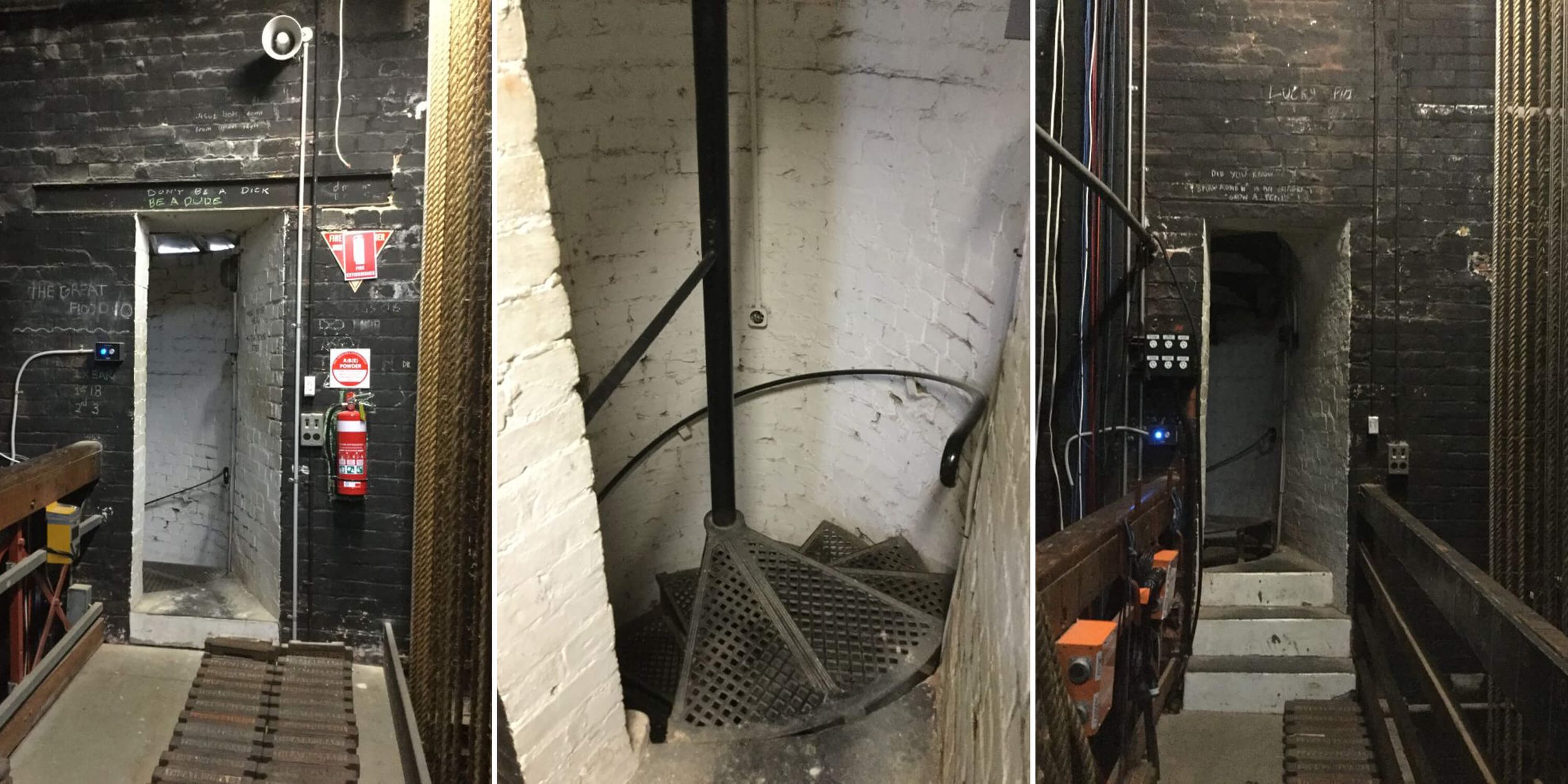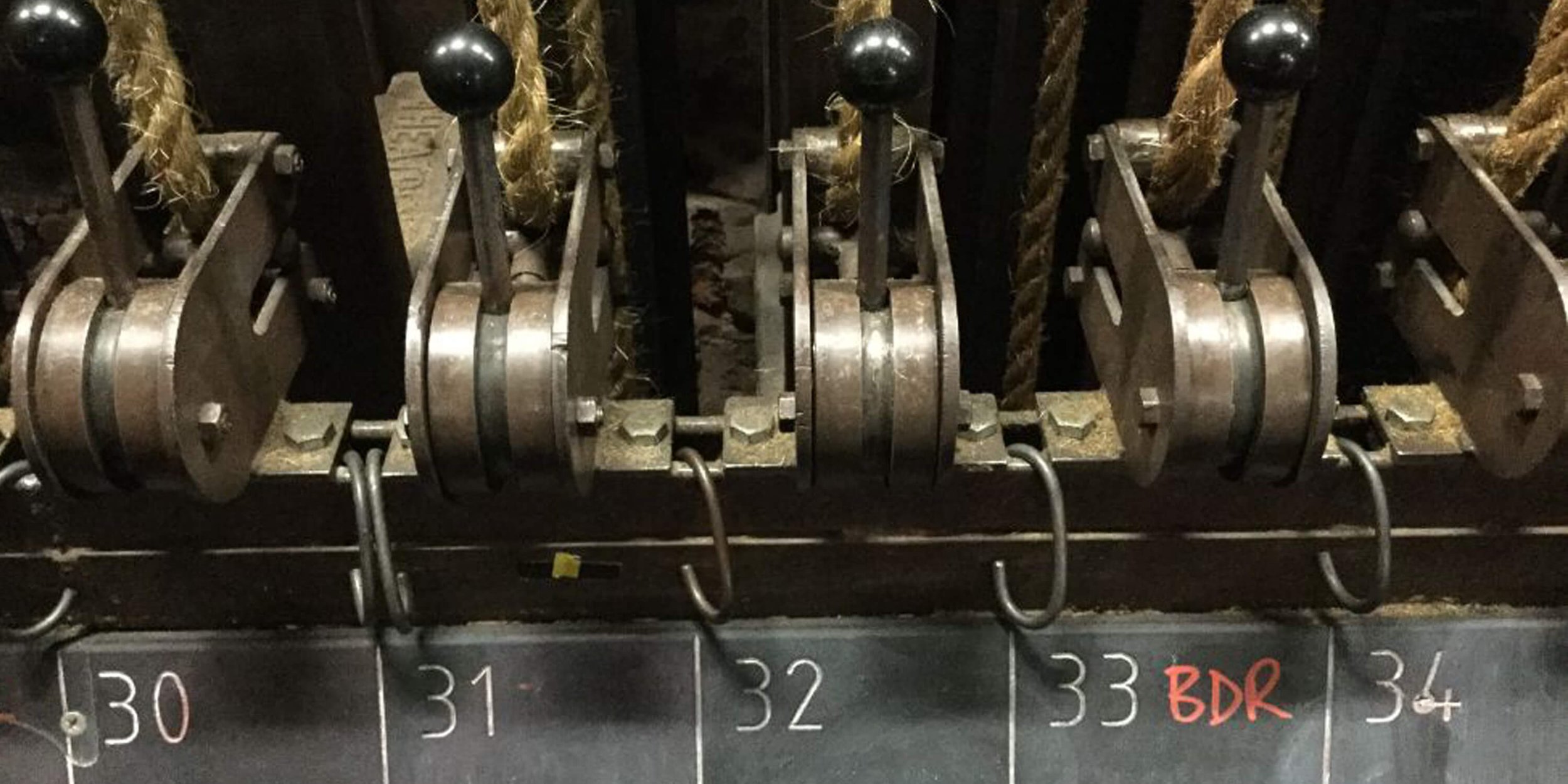TRCB Expertise: Back of House Tour of His Majesty's Theatre
TRCB Associate John Lipscombe gives us a back of house tour of His Majesty's Theatre
11 March 2021
One of Perth’s most beautiful and visited buildings also happens to be one of its least known. Among a handful of buildings in continuous use for more than a century, His Majesty’s Theatre keeps its compelling underbelly - arguably its most interesting aspect - away from the public gaze. And what a pity that is.
Constructed in 1904, its facades are standard for the era, elegant street frontage and bleak on its east, west and south flanks. But its atmospheric 'back of house’ - those areas that effectively ensure that the show goes on and which comprise more than half of the building's floor area- is a different story.
TRCB was lead consultant for the team which undertook the refurbishment of His Majesty’s public facing front of house in 2019, I was fortunate to be given a back-of-house tour by Perth Theatre Trust's Technical Manager Matthew Nankivell in late 2020.
We started in the huge void above the stage, which extends over five levels. To one side, a vast wall is neatly pinstriped with lengths of thick rope that extend up into the darkness. These are manufactured from ‘Manilla hemp’ otherwise known as banana leaves and connected to hand operated metal pullies which, together with hundreds of antique cast iron counterweights, have seamlessly moved props about the stage for more than 117 years.
Ascending from the stage on dimly lit stairs we pass graffiti scrawled over generations on age-blackened walls. Humorous and profane, some if it written well before the first motor car putted down Hay Street, these are messages that you might expect to find in an historic gaol. On one of the mid-levels Matt shows us a room that had at one time been used to paint scenes on sheets of canvas. Housing a fireplace to assist with the drying process, there is evidence of an earlier gap in the timber floorboards (now replaced by shiny new ones) through which taller scenes had been lowered.
Further up, we come across strange and strangely beautiful collections of incongruous items - a mirror ball, colourful cabling and a set of articulated theatre lights. These look more like the art of a modern stylist re-imagining an earlier era than a 21st century workplace.
At the top level, we teeter on ‘the grid’, a platform with views 20m down to the stage. With a series of steel battens arranged like missing teeth, it is a vertigo-inducing location like few others in the city. Above us is the original cast iron bracing that supports the roof and looks like it belongs in a 20th century factory.
Matt shows me the domed roof above the auditorium, which at one time could be opened so that audiences could enjoy the additional ambience of a star-spangled sky during performances. The hand operated mechanism that allowed this to happen has its own sturdy beauty. Viewed from below, the dome is articulated in tones of scarlet and gold and with warm theatrical lighting. From above the raw timber and dusty plaster is also dramatic, but in a more rustic way.
On the way back down, we take the circular stairs (there is one on each side of the stage) which Matt informs me allows actors and members of the technical team to move quickly and inconspicuously around the stage during shows. Set in metre thick brick walls with original cast iron treads and handrails, the descent feels claustrophobic through the gloom, and recalls the tight curving climb from a castle’s turret.
We finish in the basement below the stage and auditorium. It’s a rabbit warren of storage areas, corridors and picturesque workshops in which hundreds of sets have been created. Below the orchestra pit, between the stage and auditorium, a recently fitted high-tech stainless-steel lift feels incongruous in this context, enabling seating configurations that previous theatre managers might well only have dreamed of.
At the conclusion of the tour, which was equal parts exhilarating and exhausting, I was left with a sense of disbelief that an experience such as this - into the beating heart of our city’s artistic and cultural past - is not on Perth's broader tourist circuit. Many thanks to Matthew and the Perth Theatre Trust for the opportunity.
This article was written by TRCB Associate John Lipscombe.
A few more TRCB insights:









